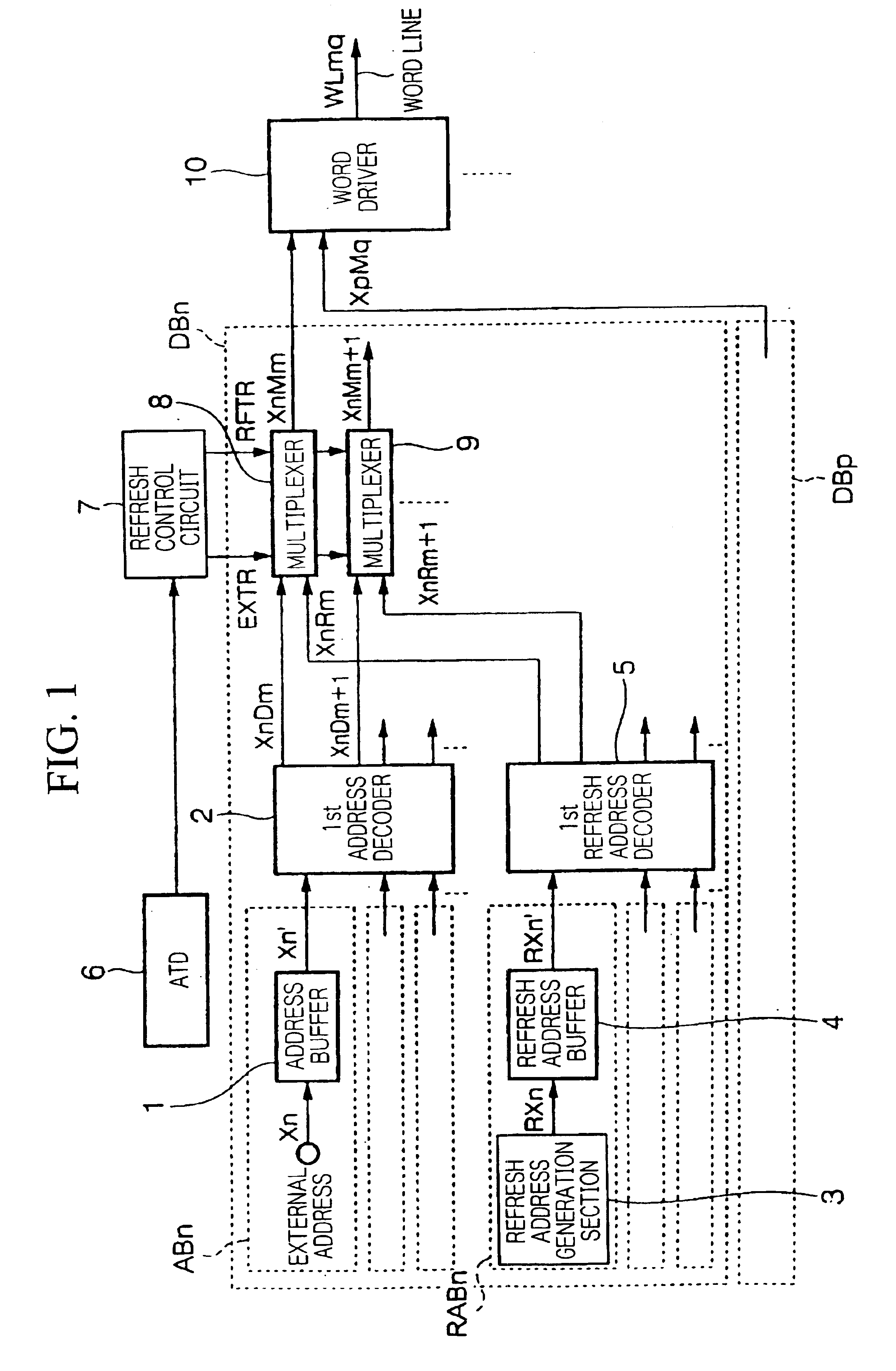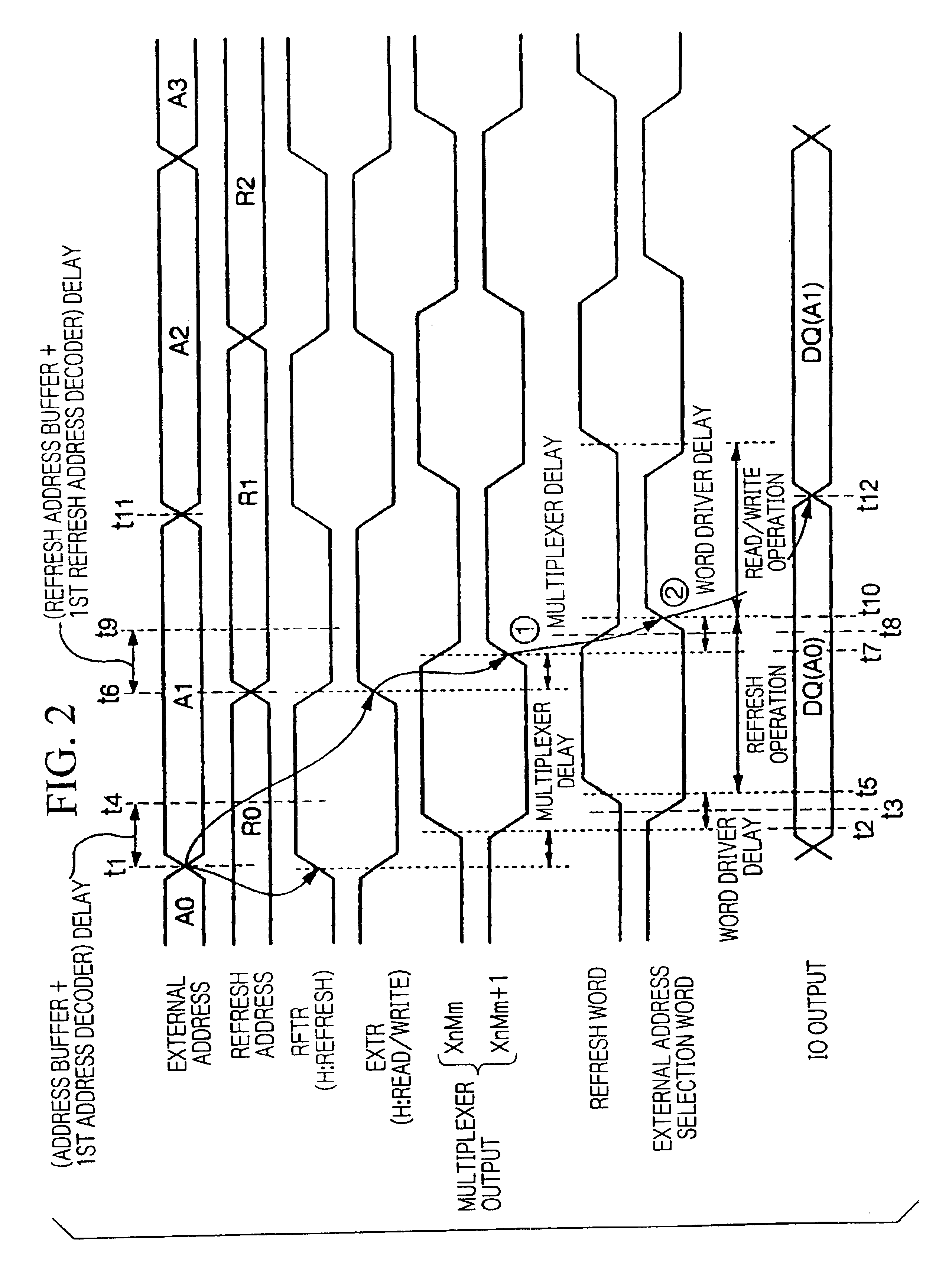Semiconductor memory device
a memory device and semiconductor technology, applied in the direction of information storage, static storage, digital storage, etc., can solve the problems of slowness, prolonged refresh operation and subsequent read/write operation, and difficulty in completing refresh operation, so as to increase the speed of the semiconductor memory device and speed up the internal operation
- Summary
- Abstract
- Description
- Claims
- Application Information
AI Technical Summary
Benefits of technology
Problems solved by technology
Method used
Image
Examples
fourth embodiment
le of the structure of a semiconductor memory device according to the present invention with respect to the hierarchical word line structure.
[0050]FIG. 11 is a block diagram showing the structure of a semiconductor memory device according to a fifth embodiment of the present invention.
[0051]FIG. 12 is a timing chart showing the operation of a semiconductor memory device according to a fifth embodiment of the present invention.
[0052]FIG. 13 is a block diagram showing the structure of a semiconductor memory device according to a sixth embodiment of the present invention.
[0053]FIG. 14 is a timing chart showing the operation of a semiconductor memory device according to a sixth embodiment of the present invention.
[0054]FIG. 15 is a block diagram showing the structure of a semiconductor memory device for realizing the address access method according to the background art.
[0055]FIG. 16 is a timing chart showing the operation of the semiconductor memory device shown in FIG. 15.
[0056]FIG. 1...
PUM
 Login to View More
Login to View More Abstract
Description
Claims
Application Information
 Login to View More
Login to View More - R&D
- Intellectual Property
- Life Sciences
- Materials
- Tech Scout
- Unparalleled Data Quality
- Higher Quality Content
- 60% Fewer Hallucinations
Browse by: Latest US Patents, China's latest patents, Technical Efficacy Thesaurus, Application Domain, Technology Topic, Popular Technical Reports.
© 2025 PatSnap. All rights reserved.Legal|Privacy policy|Modern Slavery Act Transparency Statement|Sitemap|About US| Contact US: help@patsnap.com



